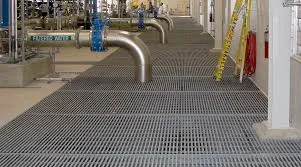
-
 Afrikaans
Afrikaans -
 Albanian
Albanian -
 Amharic
Amharic -
 Arabic
Arabic -
 Armenian
Armenian -
 Azerbaijani
Azerbaijani -
 Basque
Basque -
 Belarusian
Belarusian -
 Bengali
Bengali -
 Bosnian
Bosnian -
 Bulgarian
Bulgarian -
 Catalan
Catalan -
 Cebuano
Cebuano -
 China
China -
 China (Taiwan)
China (Taiwan) -
 Corsican
Corsican -
 Croatian
Croatian -
 Czech
Czech -
 Danish
Danish -
 Dutch
Dutch -
 English
English -
 Esperanto
Esperanto -
 Estonian
Estonian -
 Finnish
Finnish -
 French
French -
 Frisian
Frisian -
 Galician
Galician -
 Georgian
Georgian -
 German
German -
 Greek
Greek -
 Gujarati
Gujarati -
 Haitian Creole
Haitian Creole -
 hausa
hausa -
 hawaiian
hawaiian -
 Hebrew
Hebrew -
 Hindi
Hindi -
 Miao
Miao -
 Hungarian
Hungarian -
 Icelandic
Icelandic -
 igbo
igbo -
 Indonesian
Indonesian -
 irish
irish -
 Italian
Italian -
 Japanese
Japanese -
 Javanese
Javanese -
 Kannada
Kannada -
 kazakh
kazakh -
 Khmer
Khmer -
 Rwandese
Rwandese -
 Korean
Korean -
 Kurdish
Kurdish -
 Kyrgyz
Kyrgyz -
 Lao
Lao -
 Latin
Latin -
 Latvian
Latvian -
 Lithuanian
Lithuanian -
 Luxembourgish
Luxembourgish -
 Macedonian
Macedonian -
 Malgashi
Malgashi -
 Malay
Malay -
 Malayalam
Malayalam -
 Maltese
Maltese -
 Maori
Maori -
 Marathi
Marathi -
 Mongolian
Mongolian -
 Myanmar
Myanmar -
 Nepali
Nepali -
 Norwegian
Norwegian -
 Norwegian
Norwegian -
 Occitan
Occitan -
 Pashto
Pashto -
 Persian
Persian -
 Polish
Polish -
 Portuguese
Portuguese -
 Punjabi
Punjabi -
 Romanian
Romanian -
 Russian
Russian -
 Samoan
Samoan -
 Scottish Gaelic
Scottish Gaelic -
 Serbian
Serbian -
 Sesotho
Sesotho -
 Shona
Shona -
 Sindhi
Sindhi -
 Sinhala
Sinhala -
 Slovak
Slovak -
 Slovenian
Slovenian -
 Somali
Somali -
 Spanish
Spanish -
 Sundanese
Sundanese -
 Swahili
Swahili -
 Swedish
Swedish -
 Tagalog
Tagalog -
 Tajik
Tajik -
 Tamil
Tamil -
 Tatar
Tatar -
 Telugu
Telugu -
 Thai
Thai -
 Turkish
Turkish -
 Turkmen
Turkmen -
 Ukrainian
Ukrainian -
 Urdu
Urdu -
 Uighur
Uighur -
 Uzbek
Uzbek -
 Vietnamese
Vietnamese -
 Welsh
Welsh -
 Bantu
Bantu -
 Yiddish
Yiddish -
 Yoruba
Yoruba -
 Zulu
Zulu
Innovative FRP Clarifier Solution for Enhanced Water Treatment Efficiency
FRP Clarifier System A Comprehensive Overview
In the realm of water and wastewater treatment, the importance of effective clarification cannot be overstated. One of the innovative solutions to enhance clarification processes is the Fiber Reinforced Plastic (FRP) Clarifier System. This system offers several advantages over traditional materials such as steel and concrete, making it an increasingly popular choice in various industrial and municipal applications.
Understanding FRP Clarifier Systems
FRP clarifier systems utilize a composite material made of plastic reinforced with fiberglass. This construction provides an array of benefits, including resistance to corrosion, lightweight properties, and high tensile strength. These characteristics are essential in environments where exposure to harsh chemicals and various contaminants can degrade conventional materials over time.
The primary function of a clarifier is to remove suspended solids from water and wastewater. The FRP clarifier system accomplishes this through a series of processes including sedimentation, sediment collection, and eventual sludge removal. The design typically features a large, open basin where water flows slowly enough to allow particulate matter to settle to the bottom. This settled material, or sludge, can then be removed for further treatment or disposal.
Advantages of FRP Clarifier Systems
1. Corrosion Resistance One of the most significant advantages of FRP materials is their inherent resistance to corrosion. Unlike metal counterparts, FRP clarifiers do not suffer from rust or degradation when exposed to acidic or alkaline substances, thus extending the lifespan of the equipment and reducing maintenance costs.
2. Lightweight The lightweight nature of FRP makes installation easier, often requiring less heavy machinery and reducing overall construction costs. This is particularly beneficial in facilities with limited access or where heavy infrastructure is impractical.
frp clarifier system

3. Design Flexibility FRP materials allow for versatile design options. Clarifiers can be tailored to specific site conditions and treatment requirements, enhancing both performance and efficiency. Custom dimensions and configurations can be developed to fit different treatment plant needs.
4. Lower Energy Consumption Many FRP clarifier systems are designed to optimize water flow rates effectively, which can lead to lower energy consumption. This not only reduces operational costs but also aligns with global initiatives for sustainable and energy-efficient technologies.
5. Rapid Installation Due to their lightweight nature and seamless construction, FRP clarifiers can be installed more quickly than traditional materials. This further minimizes downtime for existing treatment facilities and expedites the process for new plants.
Applications of FRP Clarifier Systems
FRP clarifier systems can be utilized in a broad range of applications, from municipal wastewater treatment plants to industrial effluent treatment processes. Industries such as food and beverage, pulp and paper, and pharmaceuticals often face stringent regulations regarding water quality. Implementing FRP clarifiers can help these industries comply with environmental standards while ensuring efficient processing of wastewater.
In addition, FRP clarifiers are increasingly used in stormwater management systems. By significantly reducing suspended solids and pollutants from runoff, these systems contribute to protecting water quality in rivers and lakes, promoting a healthier ecosystem.
Conclusion
The FRP clarifier system presents an innovative and efficient solution to the challenges faced in water and wastewater treatment. With its remarkable attributes—corrosion resistance, lightweight design, and lower energy requirements—this technology is well-positioned to meet the demands of modern treatment facilities. As industries continue prioritizing sustainability and efficiency, the adoption of FRP clarifier systems is likely to grow, ultimately contributing to improved water quality and environmental protection. Investing in such advanced technologies not only aligns with regulatory requirements but also represents a commitment to responsible water management practices for future generations.
Latest news
-
Exploring the Benefits of Top Hammer Drifter Rods for Enhanced Drilling PerformanceNewsJun.10,2025
-
High-Precision Fiberglass Winding Machine for GRP/FRP Pipe Production – Reliable & Efficient SolutionsNewsJun.10,2025
-
FRP Pipes & Fittings for Shipbuilding - Corrosion-Resistant & LightweightNewsJun.09,2025
-
Premium FRP Flooring Solutions Durable & Slip-ResistantNewsJun.09,2025
-
Premium Fiberglass Rectangular Tanks Durable & Lightweight SolutionNewsJun.09,2025
-
Tapered Drill String Design Guide Durable Performance & UsesNewsJun.09,2025









